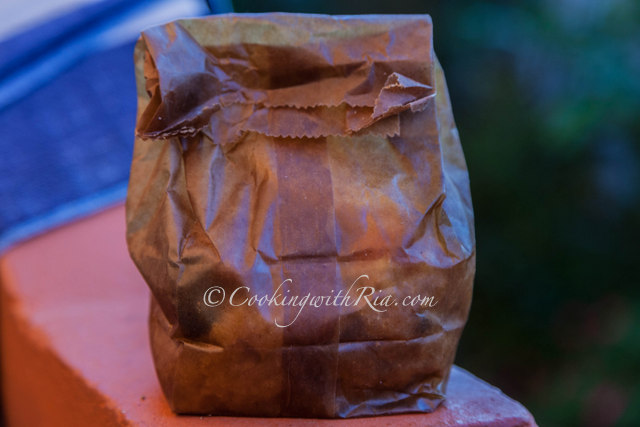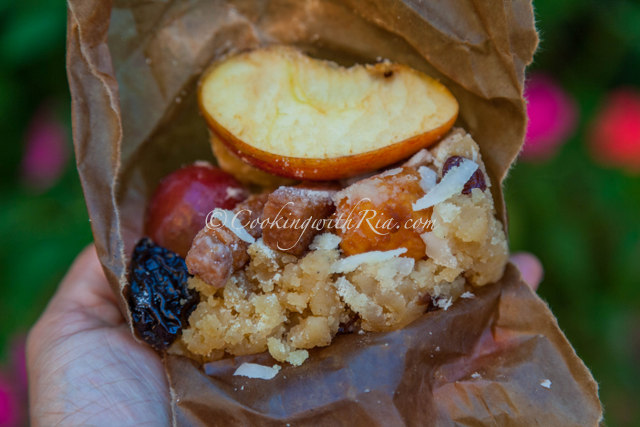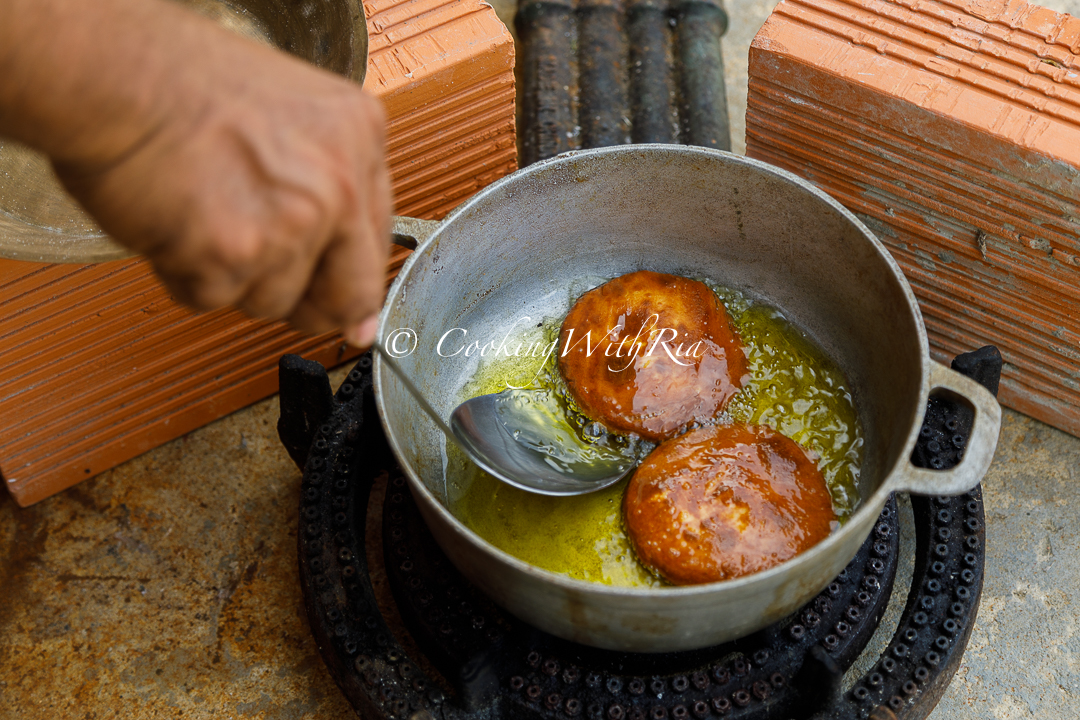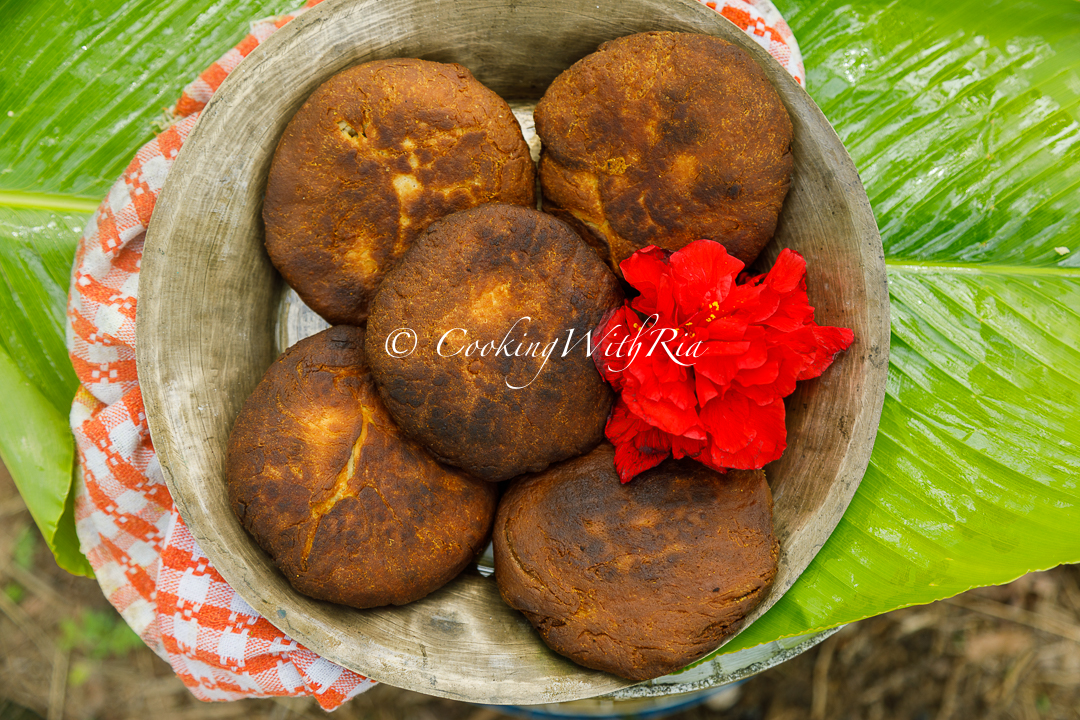What is roat?
Roat is a classic Trinidadian sweet that plays an integral role in Hindu religious ceremonies. This treat, found in the parsad bags distributed to participants, embodies both spiritual meaning and delicious simplicity.

What are the ingredients in Trinidad roat?
Roat is made from basic pantry staples – flour, honey, sugar, warm spices, and milk. These come together to form a dough, crafted into balls, flattened, and then deep-fried in ghee until they reach a deep brown, crispy perfection. It’s this sweet crunchiness that sets this sweet treat apart, resembling a well-baked biscuit or cookie, but with a rich, flavorful, yet softer center.

Tradition and Ancestry
Roat has strong roots in Indian culture, and its preparation as part of religious rituals was passed down through generations by Indian indentured laborers who came to Trinidad in the 19th century. It continues to be a way for Indo-Trinidadians to preserve and honor their ancestral religious customs. Roat was often made for significant occasions, especially for Hanuman Jayanti and Lakshmi Pooja during Divali, symbolizing prosperity and abundance.
Offering to the Gods (Prasad)
In Hinduism, food offerings made during pooja are referred to as prasad or parsad, which is believed to be sanctified by the deity and then distributed among devotees. Roat is one of the common offerings, made with love and care, and represents a gift to the gods, which in return brings blessings. After the pooja, the roat is shared among family members and attendees, spreading the blessings further.
What is in a Trinidad Parsad Bag -other than roat?
In the parsad bag, Roat shares space with a variety of other sweet treats. From mohan bhog (also referred to as parsad), and crunchy kurma to the sweetness of ladoo and milk or coconut barfi, to the comforting warmth of lapsi and sohari. It’s a mix that hits various flavor notes and levels of sweetness. The ensemble may also include a crunchy slice of apple, a grape, grated coconut, ground rice, and occasionally a prune, creating a balanced medley of goodies and treats.

A Slice of Trinidadian Childhood:
For many, Roat isn’t just a snack; it’s a trip down memory lane to Trinidadian childhoods. The name brings back images of family & neighborhood gatherings, cultural celebrations, and the simple joys that make up our traditions.
As Roat continues to be a part of West Indian kitchens, it stands as a reminder of uncomplicated pleasures and our cultural richness.
Other Diwali Recipes:
Parsad (both flour and cream of wheat)
Roat: A Simple, Crispy Delight in Trinidadian Tradition
Ingredients
- 2 cups all-purpose flour 10 oz
- 1 tbs honey
- 10 tbs granulated sugar or more to taste (1/2 cup plus 2 tbs), can also use brown
- 1 tsp ground cardamom
- 1 tsp ginger fresh, grated
- 3 tbs ghee for kneading the dough
- 3/4 cup evaporated milk cold
- 2 cups ghee for frying
Instructions
- In a bowl, combine flour, sugar, honey, cardamom, ghee and ginger
- Add evaporated milk and gradually knead to form a smooth stiff dough, process takes about 5 mins. Rub with 1 tsp ghee, cover and allow it to rest for 30 minutes.
- Divide the dough into 5 pieces and form into smooth balls or loyahs, You can also choose to make them smaller. The ends should be thinner than the middle to ensure nice, crisp edges.
- Heat ghee in small, narrow-heavy-bottomed fying ppan (narrow to use less ghee). Flatten balls to form a disc, about 1/4 inch thick and fry (1-2) at a time until dark brown, full cooked and crisp. Once done frying, you can pour some ghee on the roat for added flavor and to keep it moist.
- To maintain freshmess, once cool, wrap in a clean cloth (not washed with detergent, especially scented) or napkin and place in a resealable bag. Best used and/or eaten within 2-3 days.





JOIN OUR COMMUNITY
Popular Curry Chicken Recipes
Meet Ria!
A Trinidadian culinary connoisseur sharing recipes from Trinidad and the Caribbean with a modern twist.